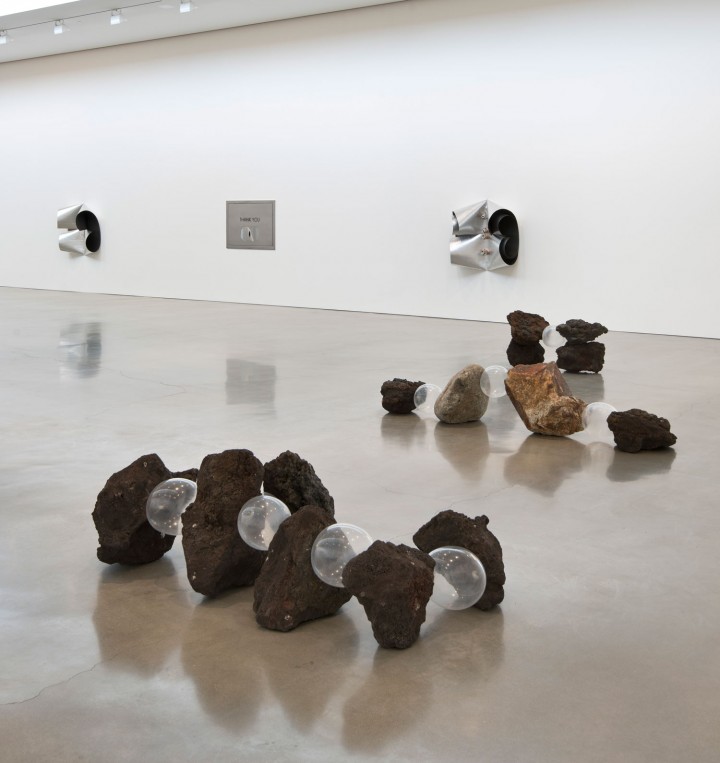A sense of disaster, balanced queasily between foreboding and aftermath, permeates Gabriel Kuri’s show at Regen Projects — his first show in Los Angeles since moving here. Tempered by a less playful sense of humor than usual, Kuri is clearly concerned with presenting a body of work that encompasses the thematic concerns and historical trajectories that have occupied him over the course of his already storied career.
Witness the deflating condoms that space volcanic rocks in the stop start exponential growth series, or the arrangement of brightly colored powder-coat steel circles, sourced from credit-card company logos, in credit becomes retail. These works minimize the potential for whimsy seen in some of Kuri’s earlier explorations of similar material. The floor sculptures, in particular, are not far from either the signifier or the shock of an earthquake. The conflation of seismic activity with systemic risk in a highly financialized economy evokes instability and collapse, ambiguously commingling prophecy and mourning, the hope for a fundamental and dramatic change with the anxiety of knowing the inevitability of catastrophe.
Nowhere is this clearer than in the central sculpture, 1/1 exponential growth, which wryly alludes to the rise and fall of civilizations through its use of an oversized prop representation of an ancient coin. This functions as the base for a likewise larger-than-life fiberglass bean. The one counts the other, one bean for one coin, as the title suggests, but this is also a doubling, alluding to the distinctly contemporary problem of financial leverage, wherein one is not one but rather the capacity to borrow much more than one, and the mathematics are less of proportion than of probability and risk.
The exhibition as a whole is a strong example of a growing concern in contemporary sculpture with time, and in particular with how language — including the language of mathematics — structures and effectuates time. In this regard, it is a complete statement without the “self portrait as a basic symmetrical distribution loop” series; but these pieces, attesting to Kuri’s enduring command of sculptural form, are lovely on their own.


